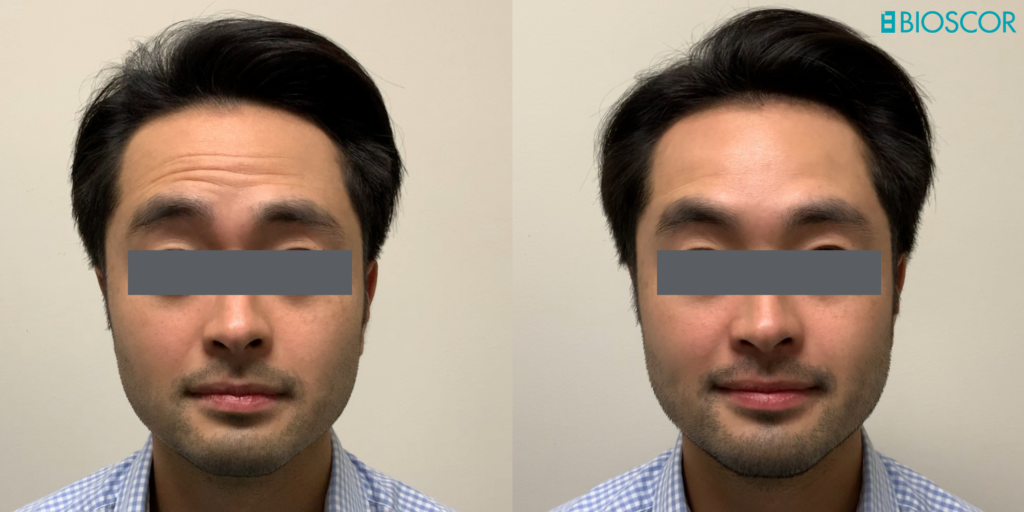Reducing the Appearance of Wrinkles
Wrinkles form for three primary reasons: years of dynamic facial movements, static forces such as gravity, and chronological aging. Dynamic wrinkles, also known as expression lines, develop from repeated facial expressions like smiling, squinting, or frowning. Over time, these movements cause creases to form in the skin, particularly in areas such as the forehead, around the eyes (crow’s feet), and between the eyebrows (frown lines).
Additionally, static wrinkles arise from factors such as the natural loss of collagen and elastin in the skin, as well as external factors like sun exposure and smoking. For example, vertical lip lines are often seen in smokers, while tennis players who frequently squint in the sun may develop crow’s feet prematurely.
How This Treatment Works
The treatment commonly used to reduce the appearance of wrinkles works by temporarily relaxing the facial muscles responsible for causing dynamic wrinkles, resulting in smoother, younger-looking skin. When administered to targeted areas, nerve signals to the muscles are blocked, preventing them from contracting and causing wrinkles. Common areas treated include frown lines between the eyebrows, crow’s feet around the eyes, and forehead lines. The procedure for the treatment of wrinkles is relatively quick, with minimal discomfort and downtime. Most patients can resume their normal activities immediately following the treatment.
Before undergoing treatment, patients are advised to schedule a consultation with an experienced practitioner. During this consultation, the practitioner will assess your medical history, discuss your aesthetic goals, and develop a personalised treatment plan.
Recovery and Results
Following treatment, some mild swelling or bruising may occur, but these side effects typically subside within a few days. Patients may begin to notice improvements in their skin’s appearance within a week, with optimal results becoming visible within two weeks.
The effects of the treatment typically last three to four months, after which repeat treatments may be necessary to maintain the desired results. Your practitioner will provide personalised guidance on follow-up treatments and skincare recommendations to prolong the benefits of the treatment.

Individual results may vary. This image demonstrates potential outcomes achieved through treatments performed at our clinic. It’s essential to consult with a healthcare professional to determine the most suitable options for you.
Potential Side Effects and Risks
It’s essential to understand that like any medical procedure, this treatment can carry potential risks and side effects. It is crucial to weigh the potential benefits against these risks. While treatment is generally safe when administered by a qualified healthcare professional, it’s important to be aware of possible adverse reactions, including:
- Temporary redness, swelling, or bruising
- Headache
- Nausea
- Temporary weakness or drooping of nearby muscles
By choosing a qualified and experienced practitioner, you can minimise the likelihood of adverse reactions and achieve optimal results safely. It is important to discuss any concerns or medical conditions with your practitioner before undergoing treatment. If you experience any unusual symptoms after receiving treatment, seek medical attention immediately.
FAQs
This page is only intended to provide factual information to educate individuals who are interested in learning more about the treatment. Our clinic offers a health-practitioner-led consultation. Depending on the outcome of the consultation, this may or may not lead to the provision of a prescription.
